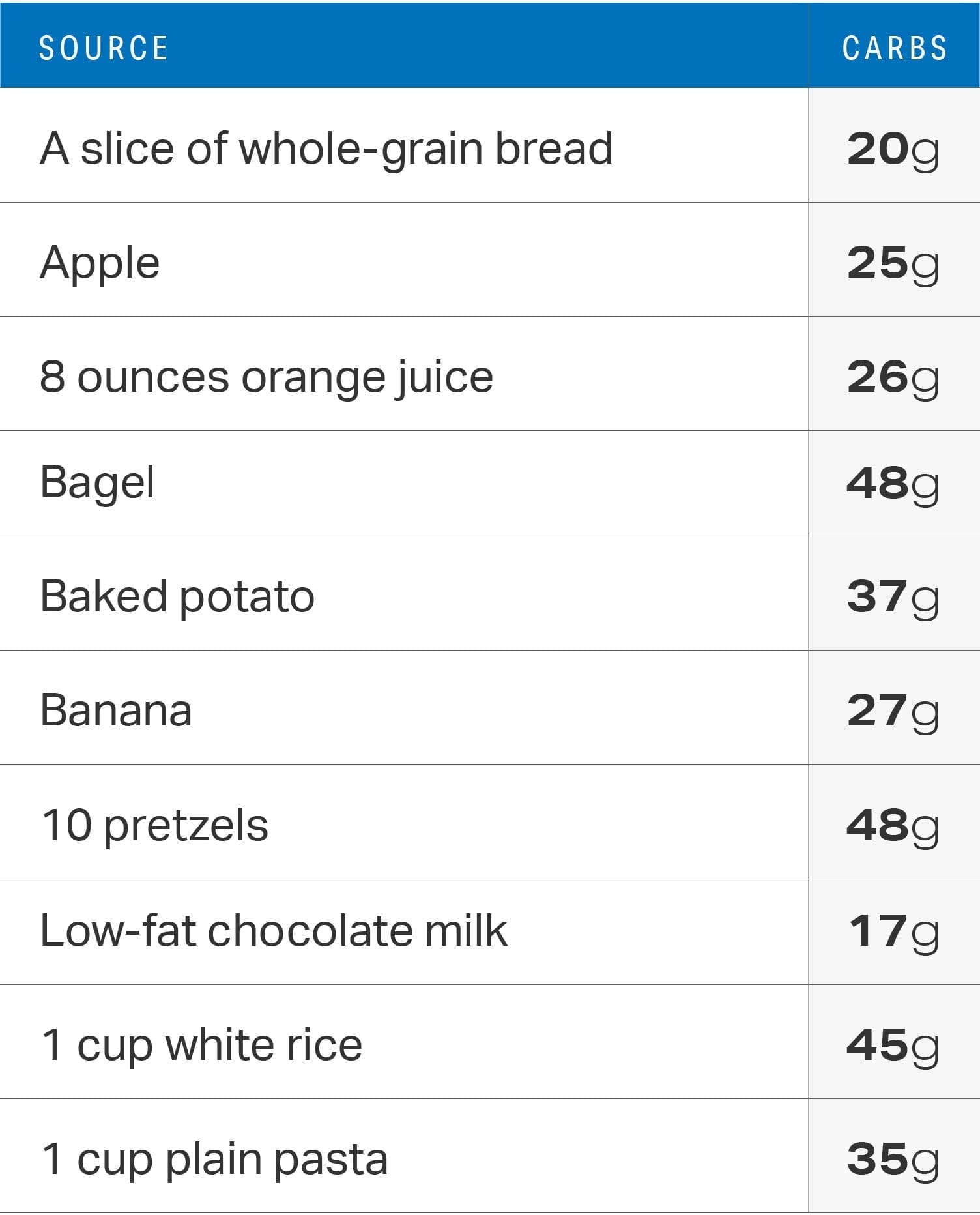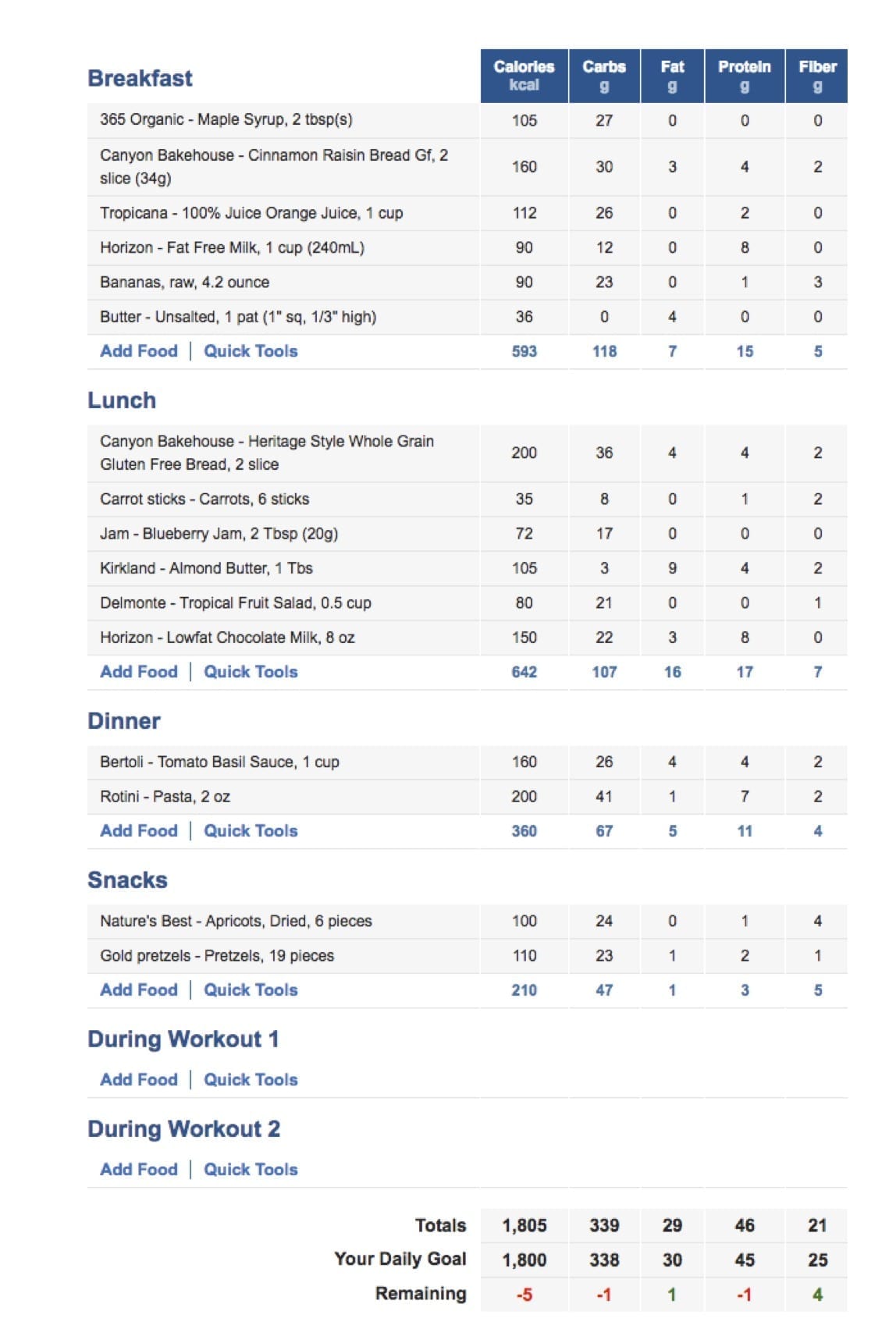Most athletes understand what a carb load is: Taking in large amounts of carbohydrates to top off glycogen stores. While carb loading is common practice among competitors before endurance events, it is often done incorrectly, negating the performance benefit. Understanding the basics of this practice in a bit more detail can help you achieve the performance boost you’re after.
THE BASICS
To get the most out of your carbohydrate load, aim for the right kind of carbs — simple, high-carbohydrate foods that are also low in fiber, protein and fat, like 100% juice, white pasta, dried fruit and tomato sauce. While donuts and pizza are high in carbohydrates, they also contain high amounts of fat and protein which slows the absorption of fuel and makes the body feel more sluggish leading up to your race. Empty calorie carbohydrate sources, like candy and soda, are also not advised as they cause sugar cravings and energy imbalances.
In addition to choosing the right carbs, aim for the right amount. Daily calorie intake should stay roughly the same during this carb-loading period as it was during your training. As you’re likely tapering and working out less, those extra calories will be used for race day energy. About 70% of your daily carbohydrate intake should be from appropriate carbohydrate sources with the remaining 25% split between roughly 10% protein and 20% fat.
Good carbohydrate sources to consume during your taper include:

Choosing the wrong carbohydrate sources can leave you bloated, constipated and sluggish. To avoid these issues, focus on the carbohydrate sources listed above. Balance is key; a bit of fiber from whole carbohydrate sources like potatoes is important to keep nutrients high and your gut running smooth, but this isn’t the time to go overboard on bran, whole grains or fruit. Adding simple carb sources is beneficial during this time but should never be the sole source of intake. Eating carbohydrate-rich foods that are familiar to your normal intake is always a safe bet; this isn’t the time for culinary experimentation!
An important fact to keep in mind when carb loading is weight gain will happen. Luckily, this weight is only water weight and will be quickly depleted during your race. For each gram of glycogen you store (to use for that personal record!), your body holds onto about 3 grams of water. A good sign you’ve carb loaded correctly is seeing a 2–4 pound gain on race day morning.
TIMING
In the ‘60s, during the early days of carbohydrate loading, the practice included a period of depletion or very low-carb intake followed by a week of loading. This was thought to prepare the body to take in a high amount of carbs but has since been advised against for lack of evidence and increased moodiness during the taper period. Eating a normal, balanced diet leading up to the event, with the last two days being high carbohydrate is enough to top off energy stores.
During these two days, keep your pattern of eating the same — meals and snacks at roughly the same time as normal. This can be tricky if you’re traveling to an event. Spacing the carbohydrates evenly throughout the day helps with digestive and energy balance issues. Many athletes find consuming a larger, carbohydrate-rich meal during the lunch hour leaves more time for proper digestion and higher energy levels come race morning — meaning you should skip the night-before-the-race pasta binge.
Here is an example of what a proper carbohydrate loading day looks like:
[pdf_insert pdf=”https://blog.myfitnesspal.com/wp-content/uploads/2018/08/carb-loading.pdf”]

[/pdf_insert]
THE BOTTOM LINE
Carbohydrate loading has been shown to help boost performance by increasing the availability of glycogen. This practice is ideal for endurance athletes doing day after day of several hour training or for a key race event such as a half- or full-marathon. Each athlete responds differently to the timing and type of foods they feel best consuming during the carb load.
It is always best to test your carb load during a long training workout or prep race before your target race. If you’re trying it out, remember to drink plenty of water and that weight gain is typical as more water is stored in the body when carb consumption is higher.
This is energy to burn on race day and it will deplete rapidly when you stop the load. More questions on carb loading? Reach out to your sports dietitian for additional info and to design a plan right for you.
Have you tried carb loading before? Share your experience for others to learn about!




